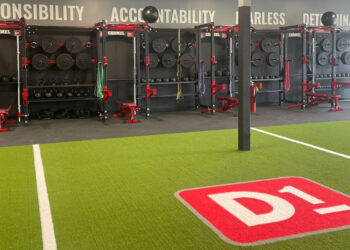What is MRSA?
An acronym for Methicillin-resistant Staphylococcus Aureus, MRSA is a dangerous type of bacteria that is resistant to many common antibiotics. It was previously found almost exclusively in hospitals, but is now a growing concern for our communities, including health clubs. According to Jack Doornbos, executive director of marketing for Hibiclens, most bacteria and viruses get weaker as they mature and mutate, but MRSA is actually getting stronger. Infection can lead to hospitalization, amputation, and even death, which has led to a need for increased awareness of the bacteria.
“It is estimated that Staphylococcus Aureus bacteria are carried by 30-50% of the population,” says Scott Seabaugh, president of CleenFreek, a company that specializes in products and solutions for germ prevention in all areas of health clubs. The community version is known specifically as CA-MRSA (Community Acquired MRSA) and has evolved from hospitals into a strain that is infecting thousands of people in the U.S. each year.
“To make matters worse, MRSA can be easily passed from person to person in a variety of ways, including by direct contact with an infected person or by sharing personal items such as towels, razors or clothing that has touched infected skin,” says Bill Orsburn, president of Preventec International; a company that specializes in providing comprehensive solutions to the problems of infection, disease, mold and odor control. Adding to the difficulty, some people can carry the bacteria without incident, passing it on to other healthy people in the community.
How Can It Affect Health Clubs?
“MRSA is a highly transferable bacteria that thrives in shared areas and can live on any surface, including exercise equipment,” says Mike Brinich, Director of Communications for CSG; a company which manufactures the products for a cleaning system that is distributed by Kleen Concepts. All staff members and anyone working out in a health club, yoga facility or aerobic area is at risk for MRSA. Health clubs provide the ideal environment for bacteria to thrive because there are many people sharing equipment, and some areas tend to be warm and/or humid. Also, it has been reported that after a hard workout a person’s immune system temporarily lowers, which could lead to a higher risk level. By not taking action to combat this serious health issue, clubs become susceptible to potential litigation, loss of membership, or even closure.
How Can Clubs Test for MRSA?
According to Thomas Painter, CEO of Preventec International, there are two methods of testing clubs can do to check for MRSA – environmental and personal. The environmental testing procedure should be undertaken at numerous points throughout the facility, and the personal testing should involve every person working in the club to determine if anyone is a carrier. According to the Centers for Disease Control and Prevention (CDC), around 30% of the population are carriers of the bacteria, while only 2-3% are actually infected with the disease. Carriers often show no signs of illness and are therefore unaware they are contaminating virtually everything they come in contact with.
How Can Clubs Prevent MRSA?
There are a number of preventative steps club owners can take to prevent a full-blown MRSA outbreak in their facilities. This can be critical to limiting liability (not to mention damaging PR) if a member ever claims to have contracted it at your club, so be sure to check your liability insurance to see if and to what extent MRSA infection is covered. Here are the top three things you can do, according to the CDC:
- Wash hands often
- Keep any lesions covered
- Regularly disinfect suspect surfaces
In addition, club owners should implement a strict program of daily prevention that includes every employee in the club. Having a clean, MRSA-free club starts with educating the personnel on ways to prevent the spread of germs. It is also smart to post good hygiene tips where members can see them, which will show them you care about their ongoing good health and well-being. Finally, all areas should be regularly tested, cleaned and disinfected with an EPA-registered product.
Once a club determines which areas are infected, it becomes easier to get a handle on preventing the spread of the disease. All of these things can result in reducing the bacteria that is present, which can also reduce the routes bacteria can be transferred, which can help give members peace of mind for a worry-free workout.
INDUSTRY RESOURCES:
CleenFreek SportsHygiene
www.cleenfreek.com
Hibiclens
www.hibiclens.com
Kleen Concepts
www.kleen-concepts.com
Preventec International
www.germstopper.net








